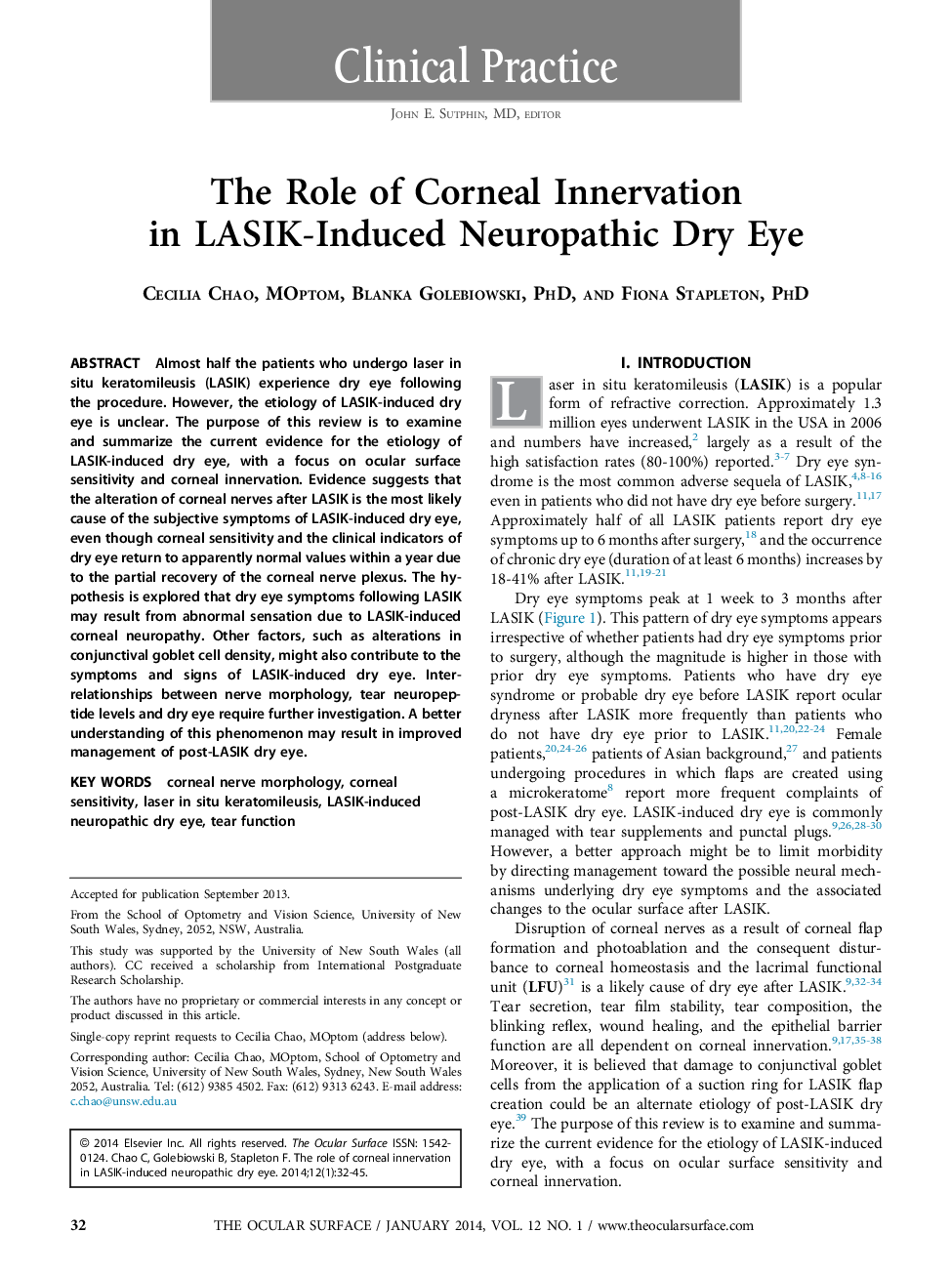| Article ID | Journal | Published Year | Pages | File Type |
|---|---|---|---|---|
| 2698830 | The Ocular Surface | 2014 | 14 Pages |
Almost half the patients who undergo laser in situ keratomileusis (LASIK) experience dry eye following the procedure. However, the etiology of LASIK-induced dry eye is unclear. The purpose of this review is to examine and summarize the current evidence for the etiology of LASIK-induced dry eye, with a focus on ocular surface sensitivity and corneal innervation. Evidence suggests that the alteration of corneal nerves after LASIK is the most likely cause of the subjective symptoms of LASIK-induced dry eye, even though corneal sensitivity and the clinical indicators of dry eye return to apparently normal values within a year due to the partial recovery of the corneal nerve plexus. The hypothesis is explored that dry eye symptoms following LASIK may result from abnormal sensation due to LASIK-induced corneal neuropathy. Other factors, such as alterations in conjunctival goblet cell density, might also contribute to the symptoms and signs of LASIK-induced dry eye. Inter-relationships between nerve morphology, tear neuropeptide levels and dry eye require further investigation. A better understanding of this phenomenon may result in improved management of post-LASIK dry eye.
